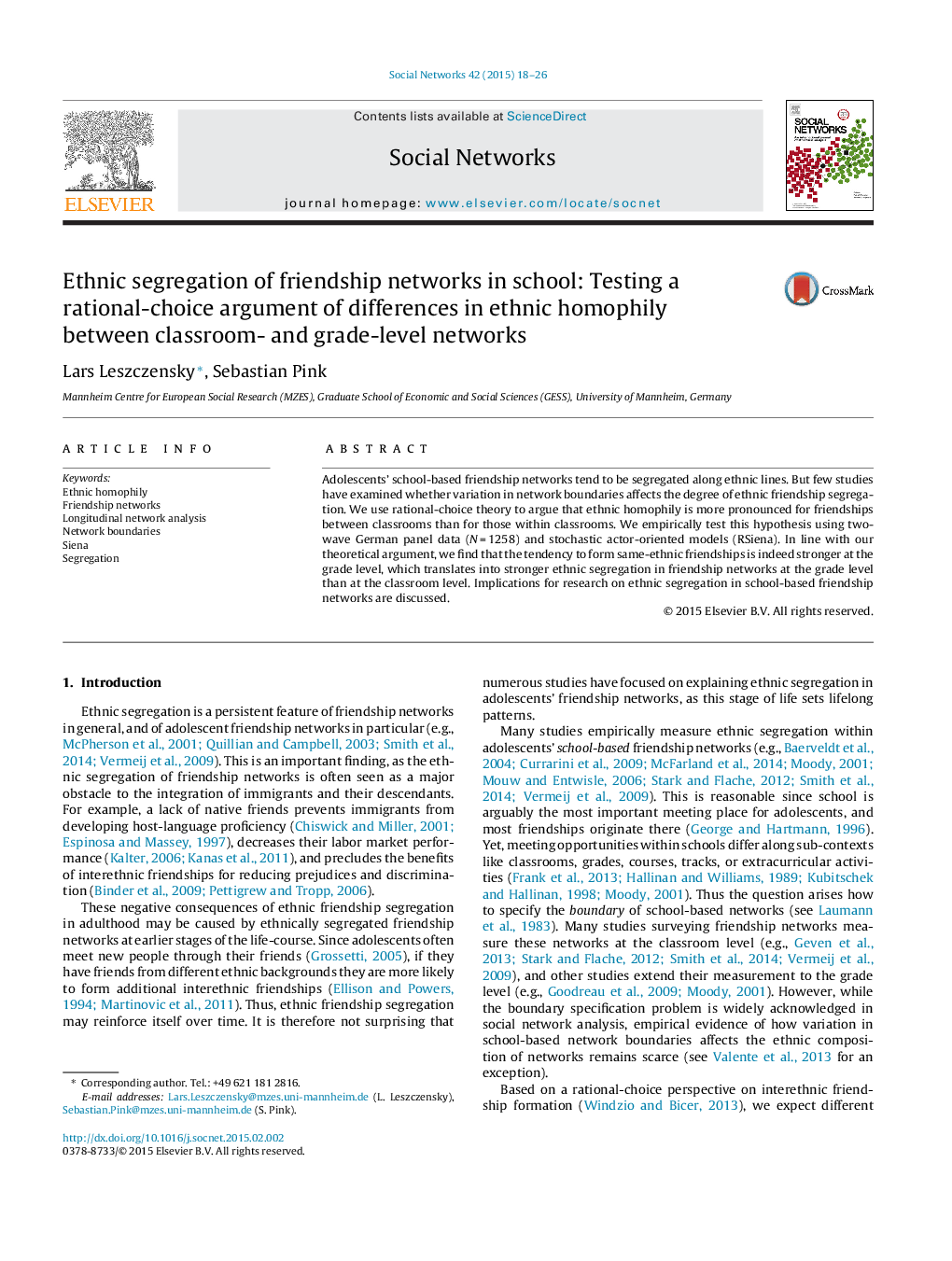| Article ID | Journal | Published Year | Pages | File Type |
|---|---|---|---|---|
| 1129399 | Social Networks | 2015 | 9 Pages |
•In schools, students tend to befriend classmates as well as same-ethnic peers.•Ethnic homophily at the grade-level is more pronounced than at the classroom-level.•Measuring ethnic segregation in classrooms underestimates ethnic segregation.
Adolescents’ school-based friendship networks tend to be segregated along ethnic lines. But few studies have examined whether variation in network boundaries affects the degree of ethnic friendship segregation. We use rational-choice theory to argue that ethnic homophily is more pronounced for friendships between classrooms than for those within classrooms. We empirically test this hypothesis using two-wave German panel data (N = 1258) and stochastic actor-oriented models (RSiena). In line with our theoretical argument, we find that the tendency to form same-ethnic friendships is indeed stronger at the grade level, which translates into stronger ethnic segregation in friendship networks at the grade level than at the classroom level. Implications for research on ethnic segregation in school-based friendship networks are discussed.
